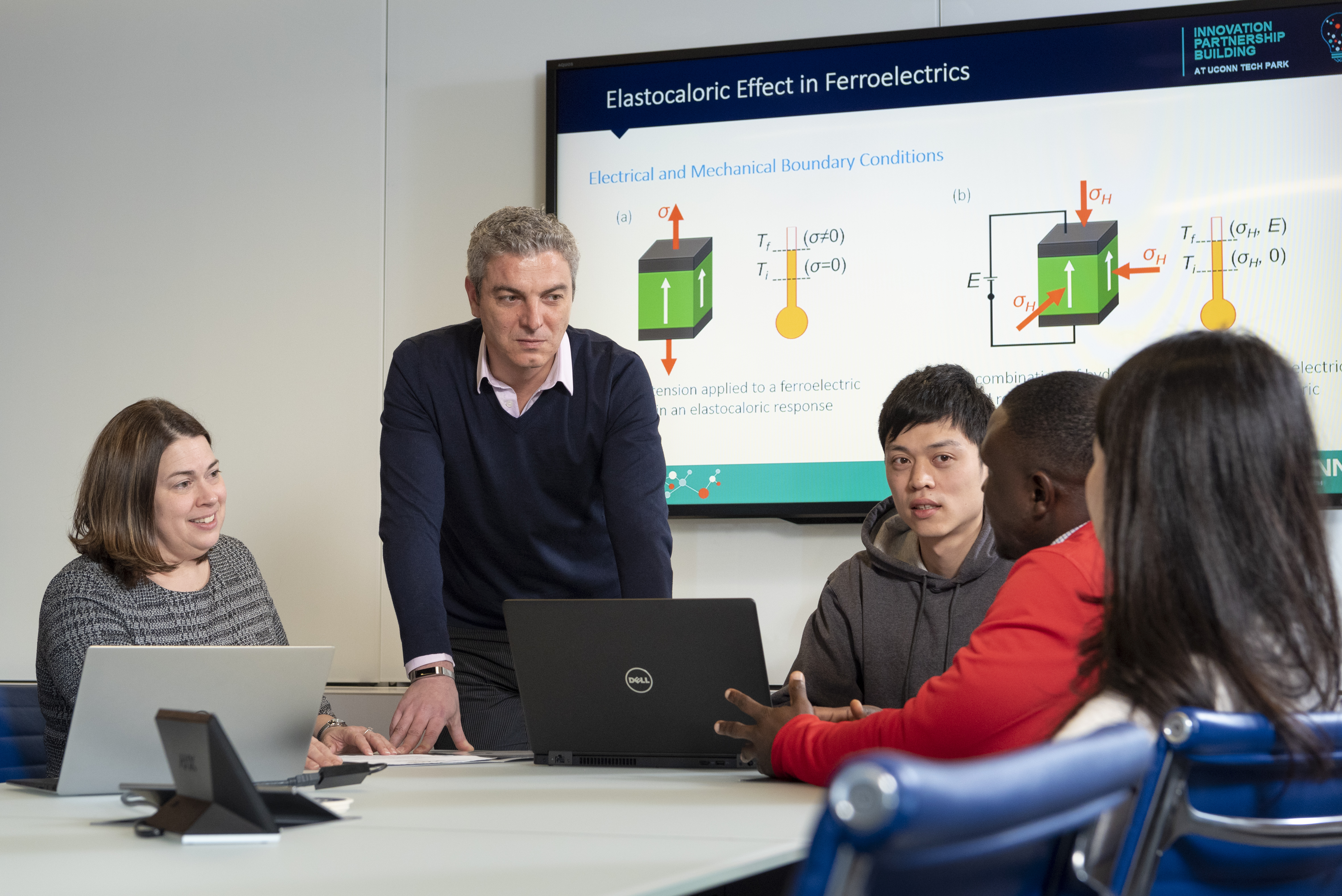The development of carbon capture technologies is of the utmost importance right now, as carbon dioxide emissions from non-renewable fuel combustion is one of the leading causes of the global climate crisis.
Enter University of Connecticut professor of chemical and biomolecular engineering George Bollas, who has patented a reverse-flow fixed-bed reactor for power generation and carbon dioxide (CO2) recapture. This model provides several significant improvements over traditional methods of capturing carbon in the atmosphere.
Bollas’ invention works with a process known as chemical-looping combustion (CLC). Chemical looping is a new technology that has not yet been applied commercially. This invention could help realize the commercial viability of CLC in part by eliminating the energy required to capture CO2, because the fuel and air streams are un-mixed.
In CLC, a hydrocarbon fuel, like natural gas, is oxidized by a metal oxygen carrier that is then regenerated by air oxidation. The metal carrier provides a bed for the combustion of fuel and hence generation of energy. This reaction reduces the oxide. The oxide is then re-oxidized through exposure to air and looped back into the system.
One problem with CLC is that the reactivity depends on the availability of oxygen sources, and reactivity is enhanced at higher temperatures. For most carriers, their reactions with hydrocarbon fuels are mildly endothermic, meaning they absorb heat. But oxidation in air is exothermic, meaning it releases heat.
This tradeoff means the overall reaction is not more efficient than conventional gas combustion, since the net heat of the total reaction remains the same. But decoupling the reactions through the CLC scheme enables independent control of each reaction step, which provides more degrees of freedom for the efficiency of a power generation system.
The reaction may also form cold pockets inside the reactor with temperature deviations of up to 500 degrees Celsius.
Another issue for CLC is that common carrier metals, like nickel and iron, catalyze carbon formation. This is a problem because, without available oxygen sources, the solid carbon remains on the bed, is oxidized in the air, and cannot be captured. In order to have high CO2 selectivity, the formation of carbon needs to be mitigated.
On top of these problems, current technologies are energy-intensive and expensive, often because of the large scale required in conventional combustion technology.
Bollas’ invention addresses these challenges by utilizing intensified fixed-bed reactor configurations in which direction of the fuel and air flows are reversed. By periodically switching flow direction inside the CLC reactor, the oxygen carrier conversion is uniform at both ends of the reactor, rather than piling up on one end.
This process produces two reaction fronts rather than one, improving the overall thermal management of the reactor and reducing hot and cold spots and significant temperature gradients.
Bollas’ reactor also provides for better contact between the fuel and the unconverted oxygen carrier, which reduces carbon formation and allows for higher CO2 selectivity.
CO2 can be separated out after condensing the water vapor created during the oxygen carrier reduction step and captured, preventing it from being emitted into the air.
Existing CO2 capture technologies rely on physical and chemical separation of CO2. These processes selectively absorb CO2 using a great deal of energy
Bollas’ invention makes the process 10% to 20% more efficient at CO2 capture and provides resistance to solid carbon formation. It also mitigates the temperature drop from the reaction, addressing the most significant challenges with CLC. It is a form of process intensification and enables modularization of the CLC reactor. The latter is enabled by the unique simple design in Bollas’ invention, where the reactor is a fixed bed loaded with the oxygen carrier and the flow regime and temperature management is controlled via valves outside the reactor.
“With this innovative process, the operation is still simple and a high-gas switching system does not entail much added cost,” Bollas says.
Bollas holds a Ph.D. from the Aristotle University of Thessaloniki. He serves as the director of the UTC Institute for Advanced Systems Engineering at the UConn Innovation Partnership Building. His current research projects include chemical-looping combustion and reforming, biomass catalytic pyrolysis, Fischer-Tropsch synthesis, biomass gasification tar upgrading, advance process systems engineering for aerospace application, refinery simulation and simulation and optimization of energy systems.
For more information about the technology and partnership opportunities, please contact Donna Cyr, PhD (donna.cyr@uconn.edu) from UConn Technology Commercialization Services.



